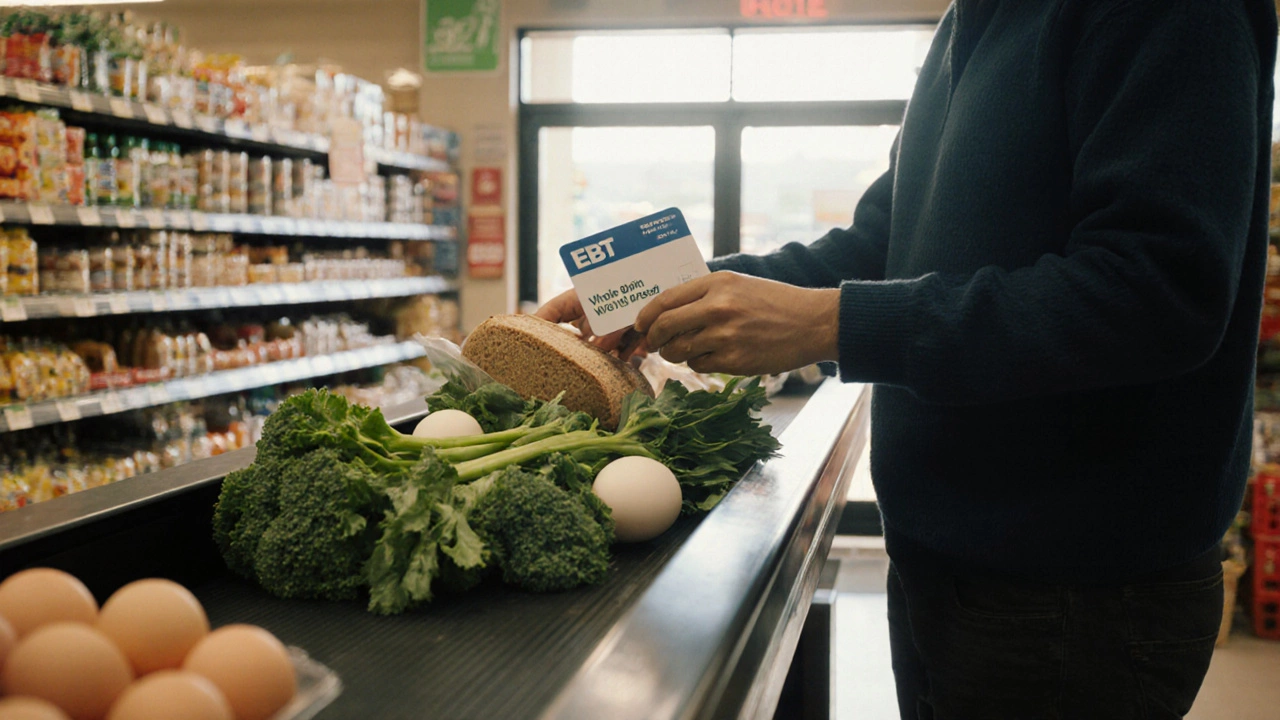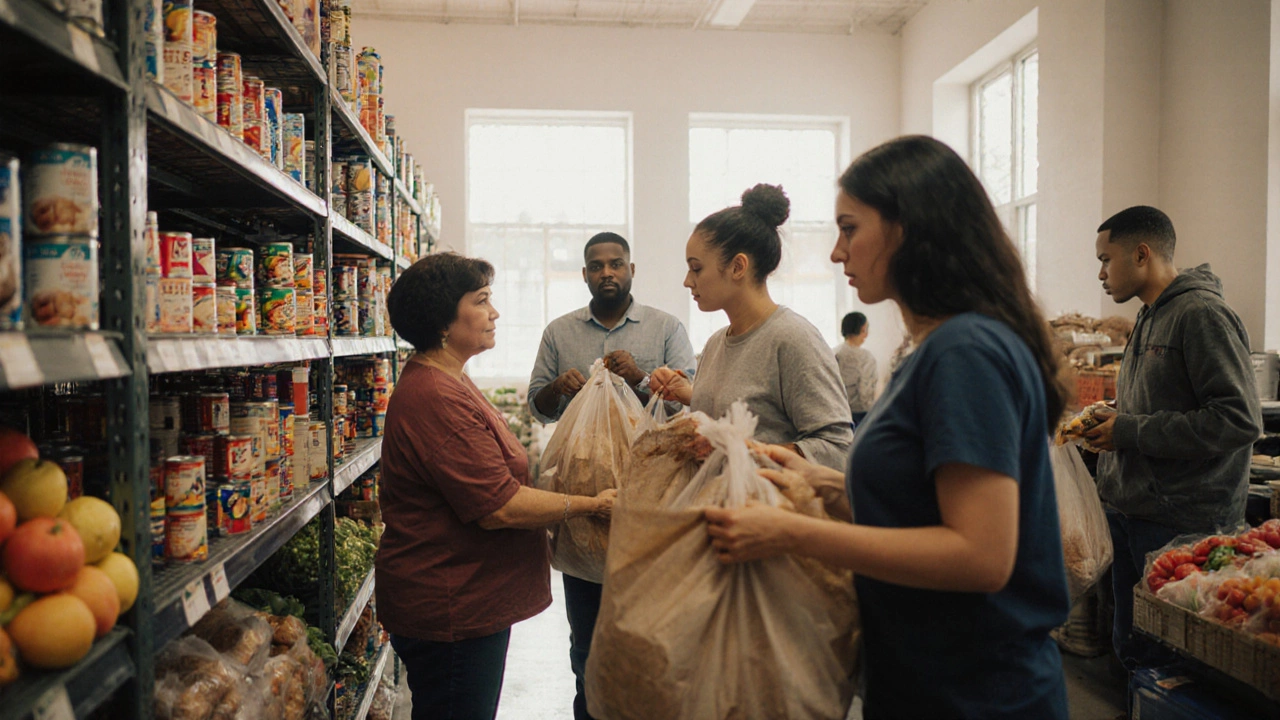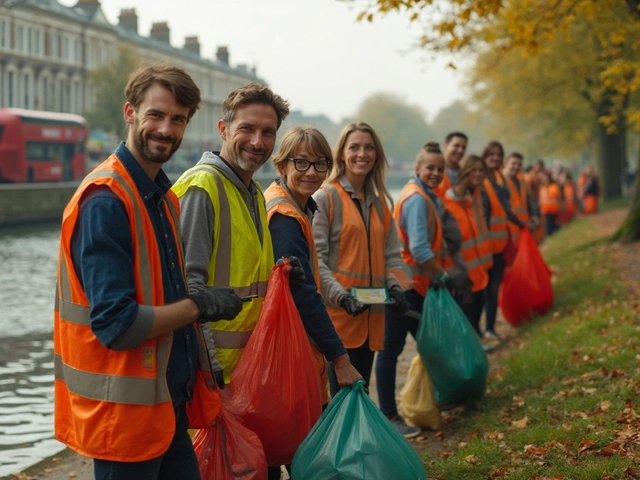What if I'm hungry and have no money for food? Here’s exactly what to do
If you’re hungry right now and don’t have money for food, you’re not alone-and you don’t have to go without. Every day, thousands of people face this exact situation. It doesn’t mean you’ve failed. It means you’re in a hard spot, and there are real, working systems in place to help you get through it.
Food banks are the first place to go
Food banks aren’t just for people living on the streets. They serve working parents, seniors on fixed incomes, students, and people between jobs. Most food banks give out groceries you can cook at home-rice, beans, canned vegetables, peanut butter, pasta, milk, eggs, and sometimes fresh produce. You don’t need proof of income, ID, or a referral. Walk in, say you need help, and they’ll give you what’s available.
Find your nearest food bank using the Feeding America website or by calling 211. That’s a free, nationwide helpline staffed by real people who know local resources. They can connect you to food pantries, meal programs, and even help with utility bills or transportation so you can get there.
Meal programs offer hot food the same day
If you don’t have a stove, a kitchen, or even a place to store food, meal programs are your best bet. Churches, community centers, and nonprofit organizations serve free hot meals every day, often at lunchtime. Some open early in the morning. Others stay open late. You don’t need to be homeless to qualify. You just need to be hungry.
Many of these programs also offer food to take home-bags of sandwiches, fruit, or packaged meals you can eat later. Ask when you arrive. Don’t assume they only serve food on-site.
SNAP benefits can help fast-sometimes in hours
Supplemental Nutrition Assistance Program (SNAP), formerly called food stamps, is the largest federal food assistance program in the U.S. You might think applying takes weeks. It doesn’t. In many states, if you qualify, you can get approved and receive your first benefits within 24 to 72 hours.
You qualify if your income is below a certain level, even if you work. For a single person, that’s usually under $1,600 a month in most states. You can apply online, over the phone, or in person at your local social services office. Bring your ID, proof of income (pay stubs, unemployment letter, or even a note if you’re unemployed), and your Social Security number.
Once approved, you’ll get an EBT card-like a debit card-that works at grocery stores, farmers markets, and even some online retailers. You can buy bread, milk, meat, vegetables, and other essentials.
Schools and churches often have hidden food resources
If you have kids, check with their school. Many schools offer weekend food backpacks filled with meals and snacks for children who rely on free or reduced-price lunches during the week. Some even have on-site food pantries for families.
Churches and religious groups often run food drives every week. They may not advertise it, but if you ask, they’ll help. A simple, “I’m struggling to feed myself right now-do you have food I can take?” opens the door. People want to help. They’re not judging.

What to bring-and what not to worry about
You don’t need to bring anything to a food bank or meal program. No ID, no proof of address, no paperwork. Some places ask for your name and how many people you’re feeding, but that’s it. Don’t be embarrassed to say you need help. Everyone there is there for the same reason.
Don’t wait until you’re too weak to walk. Don’t skip meals hoping things will get better. Hunger doesn’t wait. Neither should you.
What if you’re turned away?
Sometimes, food banks run out. That doesn’t mean there’s no help. Call 211 again. Ask for another location. Try a different church or community center. Look for mobile food trucks-they show up in neighborhoods on set days. In many cities, these trucks are staffed by volunteers who drive to areas with high need.
If you’re told you don’t qualify, ask why. Most places don’t have strict rules. If one door closes, another opens. Keep going.
Emergency food kits and local nonprofits
Some nonprofits, like the Salvation Army, United Way, and local charities, keep emergency food kits on hand. These are pre-packed boxes with shelf-stable food, hygiene items, and sometimes baby formula or pet food. They’re meant for immediate crisis situations.
Search online for “emergency food assistance near me” or “free food [your city].” You’ll find lists from local newspapers, city government pages, or community Facebook groups. People post updates daily about what’s available and when.

Don’t feel guilty for asking
Hunger isn’t a moral failure. It’s a system failure. You didn’t cause this. You didn’t choose this. You’re just trying to survive. Asking for help is the bravest thing you can do right now.
People who give food aren’t doing it because they feel sorry for you. They’re doing it because they believe no one should go hungry. That’s the truth. You’re not a burden. You’re a person who deserves to eat.
What to do after you get food
Once you have food, plan your next steps. Look for free job training programs, food literacy classes, or financial counseling. Many food banks offer these for free. Learn how to stretch meals, cook on a budget, or apply for other benefits like Medicaid or housing assistance.
One meal at a time, you’re rebuilding stability. And you don’t have to do it alone.
Can I get food from a food bank if I have a job?
Yes. Many people who use food banks work full-time or part-time. Wages have not kept up with the cost of living. If your paycheck doesn’t cover rent, utilities, and food, you qualify. Food banks don’t ask how much you earn-they just ask how many people you need to feed.
Do food banks give fresh food?
Yes. Most food banks now offer fresh produce, dairy, and meat. They get donations from grocery stores, farms, and food distributors that would otherwise go to waste. You can often get apples, carrots, eggs, milk, and even chicken or fish. Ask what’s available when you arrive.
Can I get food for my pet?
Some food banks and animal shelters partner to provide pet food. If you have a dog, cat, or other pet, mention it when you ask for help. Pet food is often available through local rescue groups, veterinary clinics, or organizations like the Humane Society. Keeping your pet fed is part of staying healthy too.
How often can I visit a food bank?
Most food banks let you come once a month. Some allow weekly visits if you’re in crisis. Others give out food every two weeks. Policies vary by location. Call ahead or ask when you go. If you need more, ask about emergency supplies or referrals to other pantries.
What if I’m undocumented or don’t have a Social Security number?
You can still get food. Food banks and meal programs do not check immigration status. You don’t need a Social Security number to receive free food. Only government programs like SNAP require documentation. Food banks operate on donations and compassion-they help anyone who needs it.
Next steps if you’re still struggling
If you’ve tried food banks, applied for SNAP, and still can’t get enough to eat, reach out to a local social worker. Many community centers have caseworkers who can help you access housing aid, medical care, or emergency cash assistance. You don’t need to figure it all out alone.
There are people who want to help. You just have to ask. And you deserve to be fed-today, tomorrow, and every day after.







